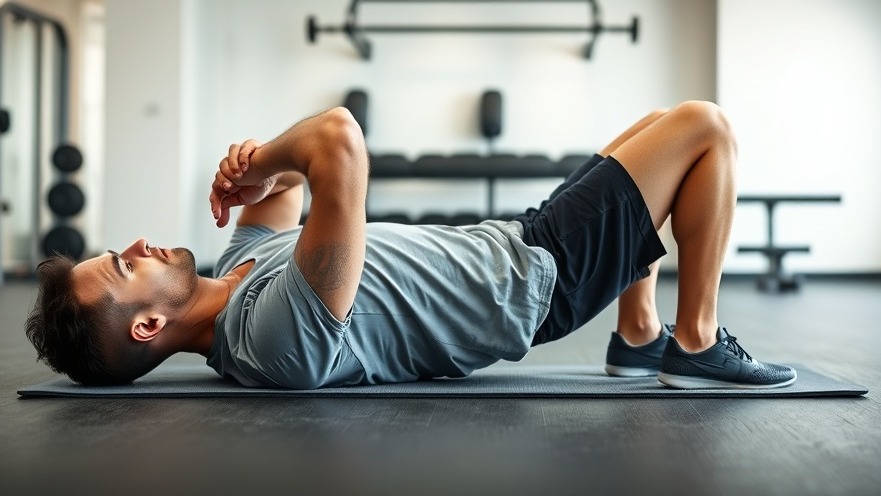
The Glute Bridge: A Foundation for Athletic Performance
In the ever-evolving realm of fitness, certain exercises stand the test of time for their remarkable efficiency and wide-ranging benefits — and the glute bridge is one of them.
While simple in movement, it powerfully targets the glutes, hamstrings, and core, forming the foundation for strength, stability, and athletic performance.
For both casual exercisers and competitive athletes, mastering this movement can unlock better posture, power, and injury resilience — all essential traits for staying active and pain-free.
As Sacramento’s wellness community continues to thrive with outdoor activities, sports, and fitness studios, understanding why this single move matters has never been more relevant.
In '5 Reasons To Glute Bridge,' the discussion delves into the various advantages of this potent exercise, prompting us to explore its extensive benefits for fitness enthusiasts, particularly in the Sacramento region.
1. Posture and Spine Alignment: The Hidden Key to Performance
Good posture is more than just appearance — it’s the backbone of athletic success. The glute bridge directly strengthens the posterior chain — the muscles along the back of your body, including the glutes, hamstrings, and lower back — which collectively support proper alignment.
According to the National Academy of Sports Medicine (NASM), strong glutes help reduce stress on the lumbar spine by stabilizing the pelvis and maintaining neutral posture during movement.
“When the glutes don’t fire properly, the lower back and knees take on more of the workload,” notes the NASM Corrective Exercise Specialist program. “Strengthening these muscles restores balance and reduces discomfort.”
For Sacramento’s active residents — from cyclists along the American River Parkway to hikers in Auburn — improved alignment means greater endurance and fewer aches after long activity days.
2. Building Power for Sports and Everyday Movement
Beyond posture, glute bridges are a secret weapon for explosive athletic power. The motion of lifting and driving through the hips mimics the same muscular engagement used in sprinting, jumping, and changing direction.
The National Strength and Conditioning Association (NSCA) recognizes hip extension as a critical component of athletic performance.
“Exercises that target the gluteus maximus improve the ability to generate force quickly — essential for sprinting, cutting, and jumping,” states the NSCA’s Performance Training Guidelines.
For local athletes in sports like soccer, basketball, and track, adding glute bridges or hip thrusts to warm-ups can “wake up” the glutes before training — priming the body for speed and control.
3. Injury Prevention: Strengthening Your Foundation
The glute bridge does more than sculpt — it protects. Weak glutes are a common contributor to knee and lower back pain, particularly among those who sit for long periods. By reinforcing the muscles that stabilize the pelvis, glute bridges ensure that movement patterns stay aligned and balanced.
The American Council on Exercise (ACE) highlights glute activation as one of the most effective methods to support joint health.
“Strong glutes stabilize the hips and help maintain optimal knee tracking,” ACE educators explain. “That translates into fewer overuse injuries and better performance during dynamic movement.”
This makes glute bridges a smart, low-impact option for Sacramento’s active community — from recreational runners to weekend paddleboarders on the river — reducing the risk of sidelining pain.
4. Unlocking Hip Mobility and Flexibility
Mobility is often the silent factor behind peak performance. Tight hips can limit stride length, squat depth, and overall efficiency. Glute bridges promote hip extension, which can help offset tightness caused by excessive sitting or cycling.
While bridges don’t directly “stretch” the hip flexors as much as dedicated mobility drills, they encourage those muscles to lengthen naturally through controlled motion.
Certified personal trainers often use bridges as part of a dynamic warm-up to increase range of motion and activation in the hips before training.
“When performed slowly and mindfully, the bridge encourages both strength and flexibility in the hips,” notes ACE’s Integrated Fitness Training model.
For Sacramento’s dance, boxing, and Pilates communities, the improved hip control and movement freedom can make workouts feel smoother and more balanced.
5. Core Stability: The Unsung Hero of Every Movement
While the name might highlight the glutes, the exercise’s hidden benefit lies in its core activation. The glute bridge strengthens deep stabilizing muscles — including the transverse abdominis and obliques — that keep your body balanced during movement.
A strong core is essential not just for aesthetics but for functional performance, from rowing on Lake Natoma to kayaking the Sacramento River. When your hips and abs work together, every motion becomes more efficient.
Research published in the Journal of Strength and Conditioning Research has shown that glute bridges can activate both the glutes and core muscles simultaneously, improving trunk stability and coordination.
Bringing It All Together: Why You Should Glute Bridge
The glute bridge is more than a basic exercise — it’s a movement that anchors total-body wellness. It builds the strength and stability needed for better posture, power generation, and injury prevention while also improving hip mobility and core control.
For Sacramento residents, integrating this exercise into your daily or weekly fitness routine can yield noticeable improvements — whether your goal is to perform better in local athletic leagues or simply move through daily life with more strength and confidence.
If you’re just starting out, aim for two to three sets of 12–15 repetitions, focusing on form over speed. With consistency, you’ll feel stronger, more balanced, and ready for any activity the city’s active lifestyle has to offer.
“It’s a small movement with big returns,” as many trainers say — and one of the simplest ways to build a foundation for lifelong performance.
Looking for more fitness inspiration? Visit our Fitness Focus section — and check out other wellness categories on Sacramento Living Well.
---
Authored by the Sacramento Living Well Editorial Team — a publication of DSA Digital Media, dedicated to highlighting wellness, local living, and inspiring community stories throughout Greater Sacramento.
 Add Row
Add Row  Add
Add 





Write A Comment